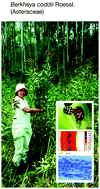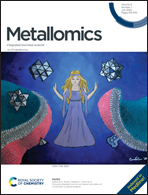Ecophysiology of nickel hyperaccumulating plants from South Africa – from ultramafic soil and mycorrhiza to plants and insects
Abstract
An overview of 30 years of studies related to South African nickel hyperaccumulators is presented. Only five species have so far been identified as Ni hyperaccumulator plants among very rich and diversified South African flora. All of them occur on soils derived from ultramafic (serpentine) rocks and belong to the family Asteraceae: Berkheya coddii Roessler, Berkheya zeyheri subsp. rehmannii var. rogersiana, Berkheya nivea, Senecio coronatus, Senecio anomalochrous. Several techniques and methods were used to investigate ecophysiological aspects of the Ni hyperaccumulation phenomenon, from basic field and laboratory studies, to advanced instrumental methods. Analysis of elemental distribution in plant parts showed that in most cases the hyperaccumulated metal was stored in physiologically inactive tissues such as the foliar epidermis. However, an exception is Berkheya coddii, which has a distinctly different pattern of Ni distribution in leaves, with the highest concentration in the mesophyll. Such a distribution suggests that different physiological mechanisms are involved in the Ni transport, storage location and detoxification, compared to other hyperaccumulator species. Berkheya coddii is a plant with high potential for phytoremediation and phytomining due to its large biomass and potentially high Ni yield, that can reach 7.6% of Ni in dry mass of leaves. Senecio coronatus is the only known hyperaccumulator with two genotypes, hyperaccumulating and non-hyperaccumulating, growing on Ni-enriched/metalliferous soil. Detailed ultrastructural studies were undertaken to characterize specialized groups of cells in the root cortex of Ni-hyperaccumulating genotype, that are not known from any other hyperaccumulator. The occurrence of arbuscular mycorrhiza (AM) in Ni-hyperaccumulating plants was found for the first time in South African hyperaccumulator plants, and this type of symbiosis has been proved obligatory in all of them. There is a significant influence of mycorrhiza on the concentration and distribution of several elements. Three highly specialized herbivore insects feeding only on Ni hyperaccumulator plants were identified: Chrysolina clathrata (formerly Chrysolina pardalina), Epilachna nylanderi and Stenoscepa sp. The Ni-elimination strategies of these specialised insects have been established. Microbiological studies have revealed several genera of fungi and bacteria isolated from B. coddii leaves as well as presence of specialised, Ni-resistant yeasts in the C. clathrata gut. Understanding ecophysiological response to harsh environment broadens our knowledge and can have practical applications in cleaning polluted environments through phytomining/agromining. Finally, conservation aspects are also discussed and lines for future research are proposed.

- This article is part of the themed collection: Phytometallomics


 Please wait while we load your content...
Please wait while we load your content...